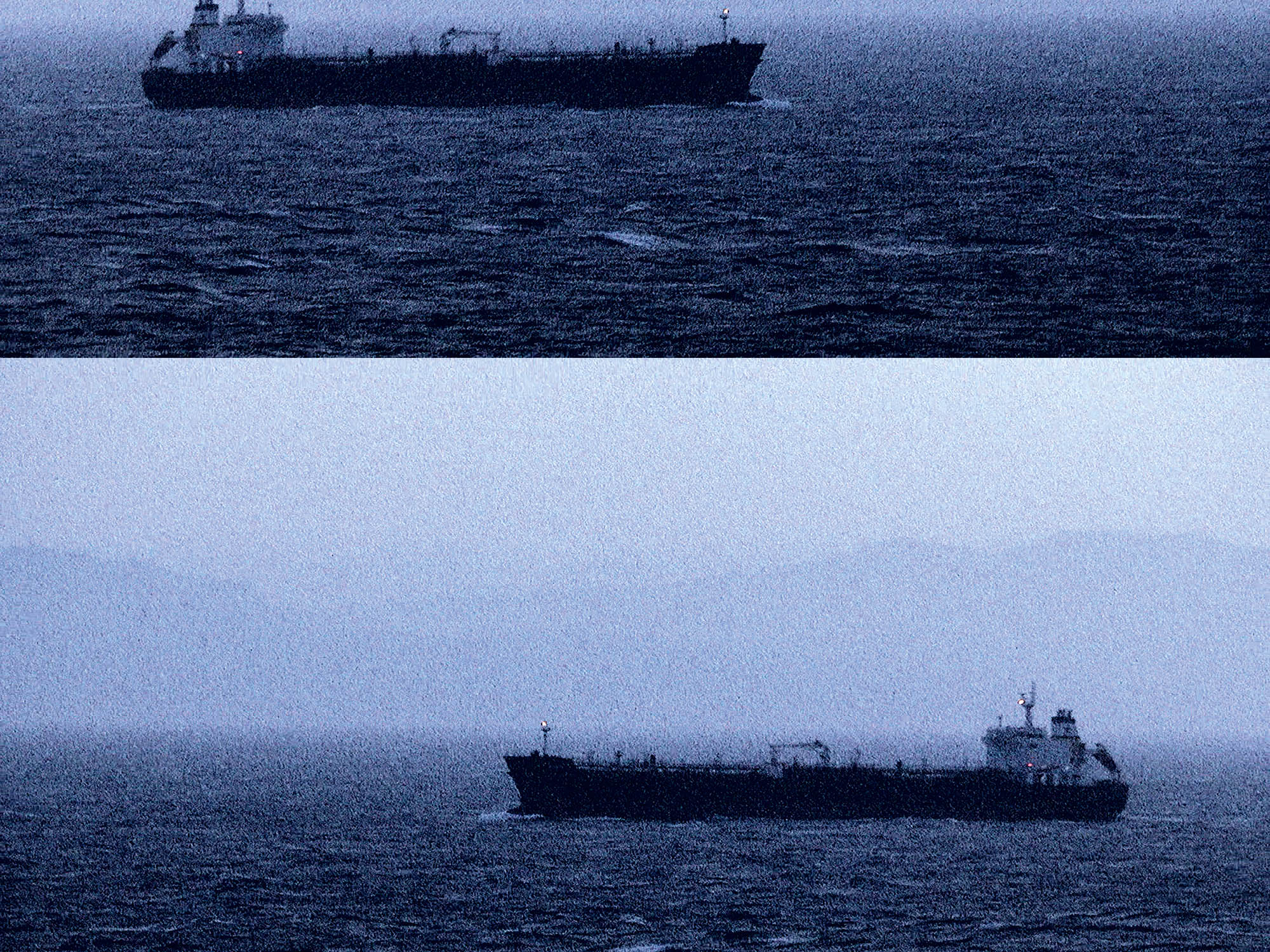
12-30 МАЯ / КИНОЗАЛ
В Центре современного искусства «Заря» доступна для ознакомления видеоинсталляция Cargo de nuit («Ночной сухогруз») французской художницы Анн-Шарлотт Финель. Проект, организованный Французским институтом совместно с сетью «Альянс Франсез» в России, создается поэтапно в пяти городах: Мурманск, Казань, Владивосток, Саратов и Калининград.
Концепция проекта, разработанного Французским институтом, была построена вокруг идеи странствия, когда художник выступает в роли путешественника и посещает несколько российских городов, в каждом из которых представляет результаты своего исследования. Бесконечное движение – одна из центральных тем в творчестве Анн-Шарлотт Финель. Каждая следующая локация связана с приключениями и новыми открытиями, в которых художница черпает вдохновение.
Понятие коллаборации является для нее одним из основных принципов, применявшихся, например, при создании музыкального аккомпанемента, написанного специально для каждой из ее работ. Изображения отличаются характерной зернистостью и измененными цветами на грани черно-белой гаммы. Художница предпочитает работать с темой непрерывных промежуточных состояний: «Я снимаю свои видео ночью, на рассвете, в закатных сумерках и в полночь. Несомненно, это самое мистическое время суток, когда все замирает в напряжении», – цитирует художницу куратор Дарья де Бовэ.
Художественный язык Анн-Шарлотт Финель во многом строится на исследовании трансгрессий, переходов, будь то сумеречное время суток или пограничное пространство между городом и природой. Создавая видео во Владивостоке, она опиралась не только на локальный контекст: ключевой образ серии Cargo de nuit – вода, которую художница интерпретирует как интеркультурный символ. Тем не менее, место, в котором художница снимала третью часть этого цикла, во многом соответствует философии и эстетике других работ Анн-Шарлотт. Владивосток – это транзитная зона и точка пересечения многих явлений и смыслов: окруженный морем и усеянный сопками, но в то же время урбанистический пейзаж города, положение форпоста европейской культуры в азиатской части мира, географическая обособленность Владивостока от столицы, но в то же время его близость к восточным соседям. Видео, над которым Анн-Шарлотт работает во Владивостоке, можно будет увидеть на экспозиции «Видеоакценты» в рамках Ночи Музеев 19 мая вместе с другими работами, созданными резидентами «Зари» во Владивостоке.
ВХОД СВОБОДНЫЙ
*Анн-Шарлотт Финель (р.1986) - молодая французская художница, её работы в жанре видеоарта были представлены на выставках во многих городах мира. В марте этого года открылась персональная выставка Анн-Шарлотт - «ОСТАВЬ МЕНЯ В ПОКОЕ СО СВОИМИ ПЕЙЗАЖАМИ! РАССКАЖИ МНЕ О ПОДЗЕМЕЛЬЯХ!» в галерее Jousse Entreprise, Париж. В Центре современного искусства «Заря» она реализует одну из частей своего масштабного выставочного проекта, создаваемого в нескольких городах России. Несколько ее работ из серии видеоарта Cargo de nuit, объединенной темой воды и движения, войдут в одноименную экспозицию, которая откроется в субботу, 12 мая.
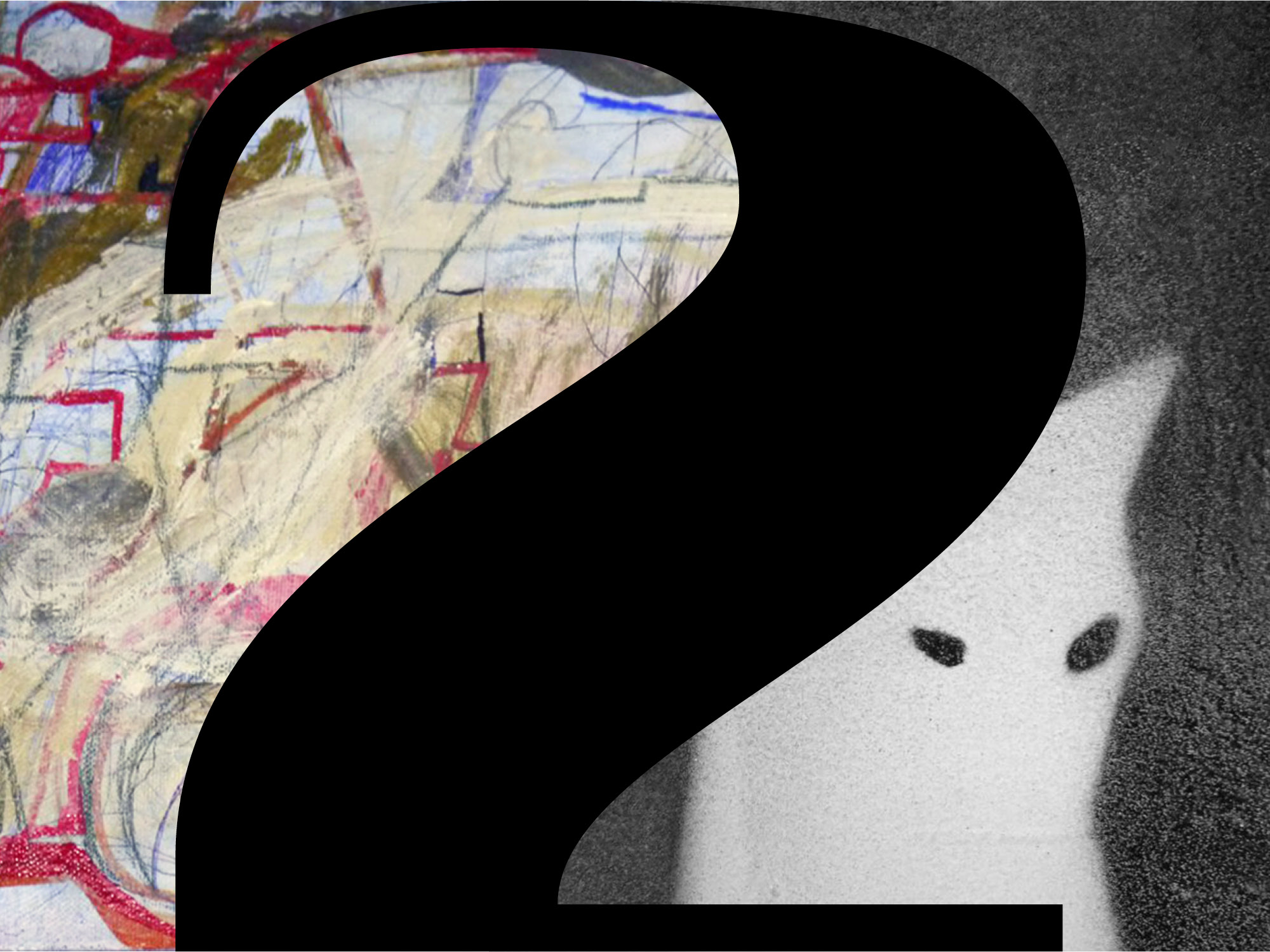
OPEN STUDIO: APRIL 24 - 29 / SMALL HALL
EXHIBITION: APRIL 30 - MAY 31 / SMALL HALL
Presented in the Small Hall of the Zarya Center for Contemporary Art, the exhibition “Two” brings together Valery Chtak (Moscow) and Kirill Kryuchkov (Vladivostok) for a collaborative project that can be observed in its formative stages through the experimental format of an Open Studio, running from April 24 until April 29. The exhibition then officially opens April 30 and will be on view through May 31. Admission is free of charge.
Vladivostok-based artist Kirill Kryuchkov is known first and foremost for his work on the street: his fonts, tags, overlays and patches can be found just as easily on the walls of the city as on his easel paintings. Kryuchkov cares deeply about nature and ecology and strives to live his life in harmony with the Earth and the surrounding environment. Reconciling people with the complicated landscape of life, his works tend to feature humanist utopian themes. The vibrant mosaics and drawings in the urban milieu serve as a kind of “landscaping,” transforming the gloomy cityscapes into “upgraded” living environments, through a play of space and colored paint.
A familiar figure on the Moscow scene, Valery Chtak works in a monochrome palette, weaving together images and text with references to philosophy, philology and cultural studies. Chtak’s paintings spill out over canvases, found objects and walls, mobilizing quotations, aphorisms, repeated visual motifs, text-based rebuses and semantic units across different languages. Any space created by Chtak acquires a complex depth, in which various disparate elements suddenly merge as parts of one elaborate immersive cipher. This marks Chtak’s second visit to Vladivostok, where he produced the site-specific installation, “Crab Inside,” as part of his residency at Zarya in 2016.
The methods and techniques of Chtak and Kryuchkov may vary, but both artists are confident that they can pull off this experimental exhibition-as-dialogue-as-improvisation. This is not Zarya’s first exhibition of artists who perhaps didn’t share the same “vibe,” but never before have these artists worked together. For Zarya, this exhibition is not just a formal experiment, but also a new way to support a few Vladivostok artists who have struggled to overcome the confines of the local scene.
As art critic and curator Nicolas Bourriaud once noted, “Art is a state of encounter.” We live in a world where the signs, symbols and images inciting us to certain actions have been commercialized. We all are destined to follow certain paths and “zones of communication.” When the architecture of life does not provide us with an exit from these set routes, then, despite all the advances in communications technology, our possibilities for real dialogue remain limited. In other words, outside of these particular circumstances, artists from different ends of the continent might never have met, nor engaged one another in a conversation.
This project aims to forge new paths for communication and push the conversation past all previously prescribed boundaries. Signs, symbols, images and emblems are also capable of facilitating communication and sharing experiences with others. When art serves as an opportunity for dialogue, an opportunity to change how we relate to life, then we are no longer talking just about a conversation between a random “two”-some, but rather expanding that conversation to all participants, including the viewers who visit the exhibition.
“Two” is not so much a dialogue, an accumulation or multiplication, as it is an increase in the number of possible interpretations, of other ways of looking at the context and influencing our perception of the world.
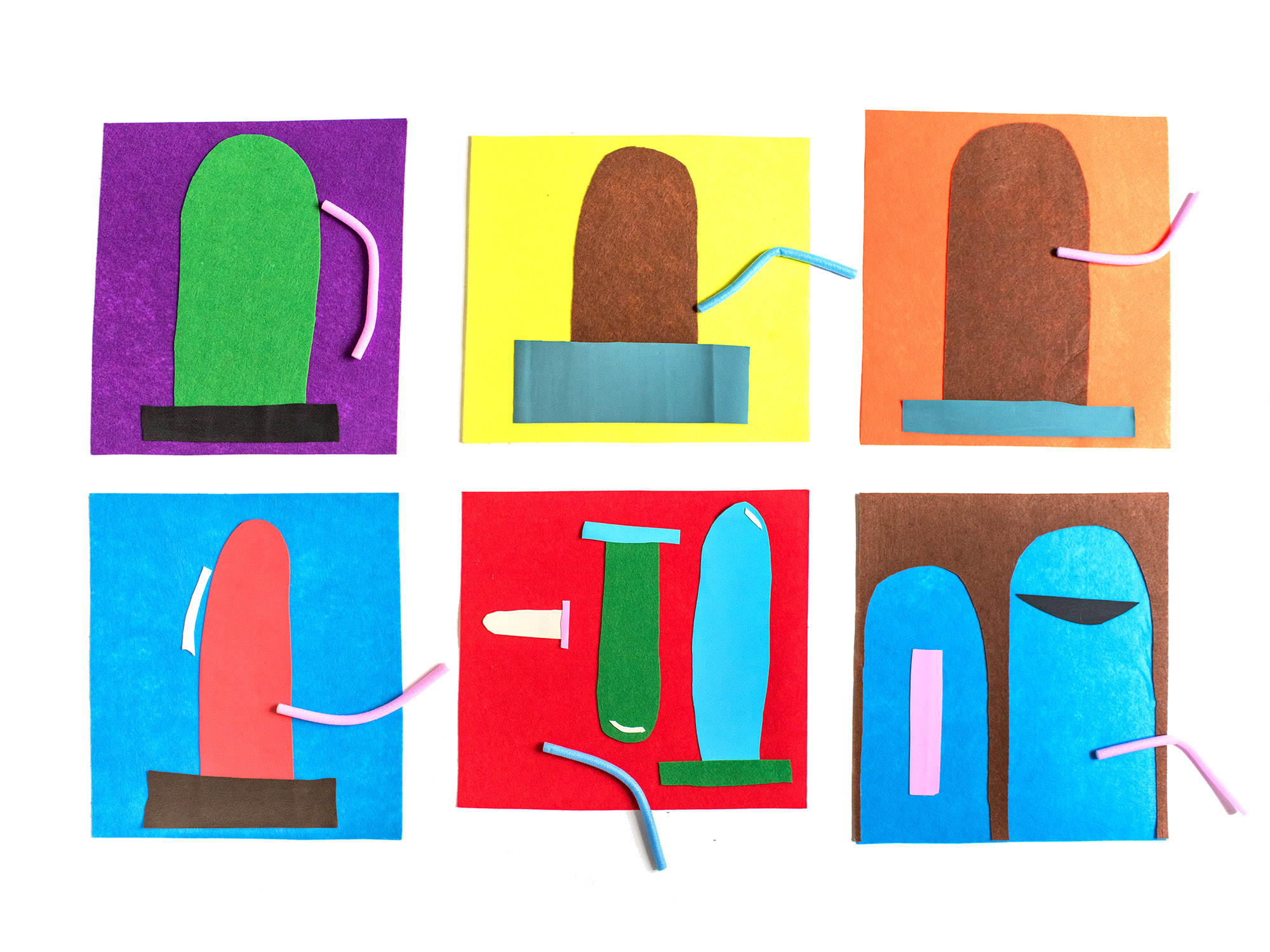
12-19 АПРЕЛЯ / МАСТЕРСКАЯ АРТ-РЕЗИДЕНЦИИ (ЦРМ, 5 ВХОД)
В мастерской «Зари» откроется выставка участницы резидентской программы Верены Иссель. Экспозиция «Молчаливая утопия» представит результаты её работы во время пребывания во Владивостоке. Выставка продлится до 19 апреля.
Берлинская художница Верена Иссель во время своего пребывания во арт-резиденции «Заря» собирала свои впечатления о городе в единую картину. Образ Владивостока она интерпретирует как сложную мозаику, включающую элементы разных эпох и многообразие влияний разнородных культур.
Исследуя новое для себя пространство, художница сосредотачивает внимание главным образом на архитектурной составляющей городского ландшафта и её поразительной стилистической пестроте. Иссель отмечает очевидную контрастность застройки, когда монументальные сооружения эпохи арт-деко соседствуют с советскими зданиями и уцелевшими образцами деревянного зодчества. Однако, в этом многообразии форм можно выделить и общий элемент: наличие декорированного фасада, представленного узорами, резьбой, рельефами и муралами.
Наиболее сильное впечатление на художницу оказали советские росписи и мозаики – этот вид декора являет собой не абстрактные формы, а сложные композиции, со своей структурой образов и чётким нарративом. Это было поистине доступное искусство «для людей», легкое в интерпретации, использующее простой язык, понятный широкой публике.
Демократичность этих росписей Верена Иссель противопоставляет элитарности искусства институциональной системы. Рассматривая феномен монументального декора советской архитектуры в качестве актуального и уместного ответа на процессы, затронувшие культуру под влиянием глобализации, художница, тем не менее, сознательно отступает от мотива идейной пропаганды, традиционно присущего культуре эпохи социализма.
Работы Верены – это коллажи, выполненные с использованием различных материалов, внешней формой отсылающие зрителя к тем самым настенным росписям и рельефам. Сюжеты, запечатленные художницей - это фиксация самых ярких моментов ее пребывания в городе, разнородных и красочных, как сам Владивосток.
Итоговый проект представляет собой портрет города, при создании которого автор руководствуется не только собственными впечатлениями, но и использует разнообразные символы клишированного представления иностранца о России.
Таким образом, экспозиция включает в себя образы монументов, вдохновленные бесчисленными памятниками на улицах города. Фигуры военных танков, в пастельных тонах, отсылают к фортификационным сооружениям Владивостока. Нелепые штампы чередуются с атрибутами глобализации и новейших тенденций: классические огурцы ala rus, рядом с ними – бургеры и смартфоны. Подражания советским муралам воссоздаются из безделушек с китайского рынка. Присутствуют зарисовки на тему зимней рыбалки и другие узнаваемые сюжеты. Все эти разрозненные на первый взгляд части складываются в единую композицию, имитирующую настенную роспись, посвященную Владивостоку.
ВХОД СВОБОДНЫЙ
*Верена Иссель (р.1982) - художница, работающий в жанре инсталляции, живет и работает в Гамбурге, Германия. Окончила Академию Изобразительных Искусств и Гамбургский Университет. У Верены две степени магистра: в визуальных искусствах (скульптура, инсталляция и кино), а также в классической филологии. На протяжении многих лет является участником различных программ резиденций по всему миру - в Южной Корее, Шанхае, Тайване, Японии, Литве, Германии, Бельгии. Помимо этого, ее персональные выставки были представлены в Норвегии, Франции, Японии, Шанхае.

1-8 АПРЕЛЯ / МАСТЕРСКАЯ АРТ-РЕЗИДЕНЦИИ (ЦРМ, 5 ВХОД)
Алина Десятниченко уже более года занимается темой современного казачества, и во время резиденции во Владивостоке она сосредоточилась на изучении жизни и культуры представителей Уссурийского казачьего войска. Если в случае с Краснодарским краем казаки – одна из главных опор локальной идентичности, то о том, как живут и чем занимаются они в Приморье, знают, пожалуй, немногие.
В ходе исследования фотограф посещала казачьи общины и поселения, участвовала в сборах, парадах, репетициях торжественных мероприятий, фиксируя происходящее на камеру. Помимо фотографий, посетители смогут ознакомиться с записями интервью с представителями организаций, объединенных общим вопросом: «Что означает быть настоящим казаком?» Выставка предлагает один из возможных образов казачества сегодня, отражающий, с одной стороны, каким оно хочет себя представить, и, с другой стороны, каким восприняла его автор проекта.
Однако серия «Я – казак» является не только исследованием в области визуальной антропологии, но и результатом профессиональной рефлексии документального фотографа. Кто наделяет его правом на отображение реальности, которая впоследствии будет считаться объективной? Портрет сообщества в фоторепортаже – не только результат отбора того, что именно его герои позволили увидеть и запечатлеть, но и всегда личный взгляд автора, отражение его мнения и вкусов, личная интерпретация, на основе которой рождается интерпретация зрительская. Этический вопрос о неизбежной субъективности и относительности задокументированного фотографом также встает перед Алиной Десятниченко, и она адресует его в первую очередь себе.
Справка: Алина Десятниченко (1991 г.р.) — документальный фотограф из Краснодара.
Закончила школу современной фотографии «ДокДокДок» Михаила Доможилова, а также курс «Искусство быстрого реагирования» в самопровозглашенном Краснодарском Институте Современного Искусства арт-группировки ЗИП. В данный момент завершает обучение на журфаке КубГУ.
Ее работы принимали участие в групповых выставках в Краснодаре, Воронеже, Екатеринбурге и Тверской области. В 2017 году в рамках арт-резиденции музея Дом Метенкова открыла персональную выставку «Дверь в стене» в Екатеринбурге. В 2017 и 2016 снимки Алины также были отмечены жюри конкурсов «Неслучайный свидетель» в категории «Правозащитники» и «PhotogrVphy Grant» в категории «People».
Алина сотрудничала с такими изданиями, как The Calvert Journal, Афиша Daily, Bird In Flight, Такие дела, Медиазона, Секрет фирмы, РБК, Ведомости, Russia Beyond The Headlines, Заповедник, Seasons, Нож, GEO, Dekoder и другими.
ВХОД СВОБОДНЫЙ
.jpg)
23-30 МАРТА / МАСТЕРСКАЯ АРТ-РЕЗИДЕНЦИИ (ЦРМ, 5 ВХОД)
Иван Новиков занимается темой взаимного влияния России и Азии, а также изучением границ между природой и культурой. Предметом исследования Ивана в рамках программы арт-резиденции стала специфика владивостокской идентичности. Предполагается, что город, основанный на окраине империи, более удаленный от центра России, чем от соседних представителей чуждых ей азиатских культур, является носителем ряда особенностей, несвойственных другим населенным пунктам страны. Прошедший месяц во Владивостоке художник посвятил поискам этих отличительных черт, сбору информации и аккумуляции знаний о Приморье, провел ряд интервью с представителями организаций города.
Однако эти поиски заставили художника задаться парадоксальным вопросом: а существует ли приморская идентичность как таковая? Действительно ли так сильно отличаются друг от друга жители Западной или Центральной России и Дальнего Востока, корни которых, по сути, намного более близки, чем географические расстояния, разделяющие их теперь? В какой степени идентичность того или иного места складывается естественным путем, а в какой –конструируется искусственно теми, кто усиленно ее ищет?
В научном исследовании поставленная гипотеза может быть как доказана, так и опровергнута, на основании чего делаются заключения и рождается новое знание, и исследование художественное следует той же логике. Может случиться, что в процессе поиска Другого возникают вопросы, обращенные к самому себе. В этом случае особенно важно установить дистанцию по отношению к личному и сохранить отстраненный, холодный взгляд исследователя.
В качестве итогового проекта будет представлен импровизированный музей-мастерская приморского художника Господина N, наполненный связанными с ним артефактами – рисунками, живописными полотнами, фотографиями, видеохроникой.
Проект реализован Иваном Новиковым совместно с соавторами – общественными деятелями, писателями, художниками и исполнителями Владивостока: Василием Авченко, Ольгой Аристовой, Татьяной Олгесашвили, Мариной Бариновой и др.
Справка: Иван Новиков – художник, исследователь искусства и куратор. Родился в 1990, Москва, Россия. Живет и работает в Москве и Хуэ, Вьетнам. Выпускник МГАХИ им. В. И. Сурикова и Института современного искусства «База». Со-основатель пространства «Центр Красный» в Москве. Член редакционного совета «Художественного Журнала». Заведующий кафедрой живописи института «База». Номинант премии Кандинского (2015), финалист премии «Инновация» (2016).
ВХОД СВОБОДНЫЙ
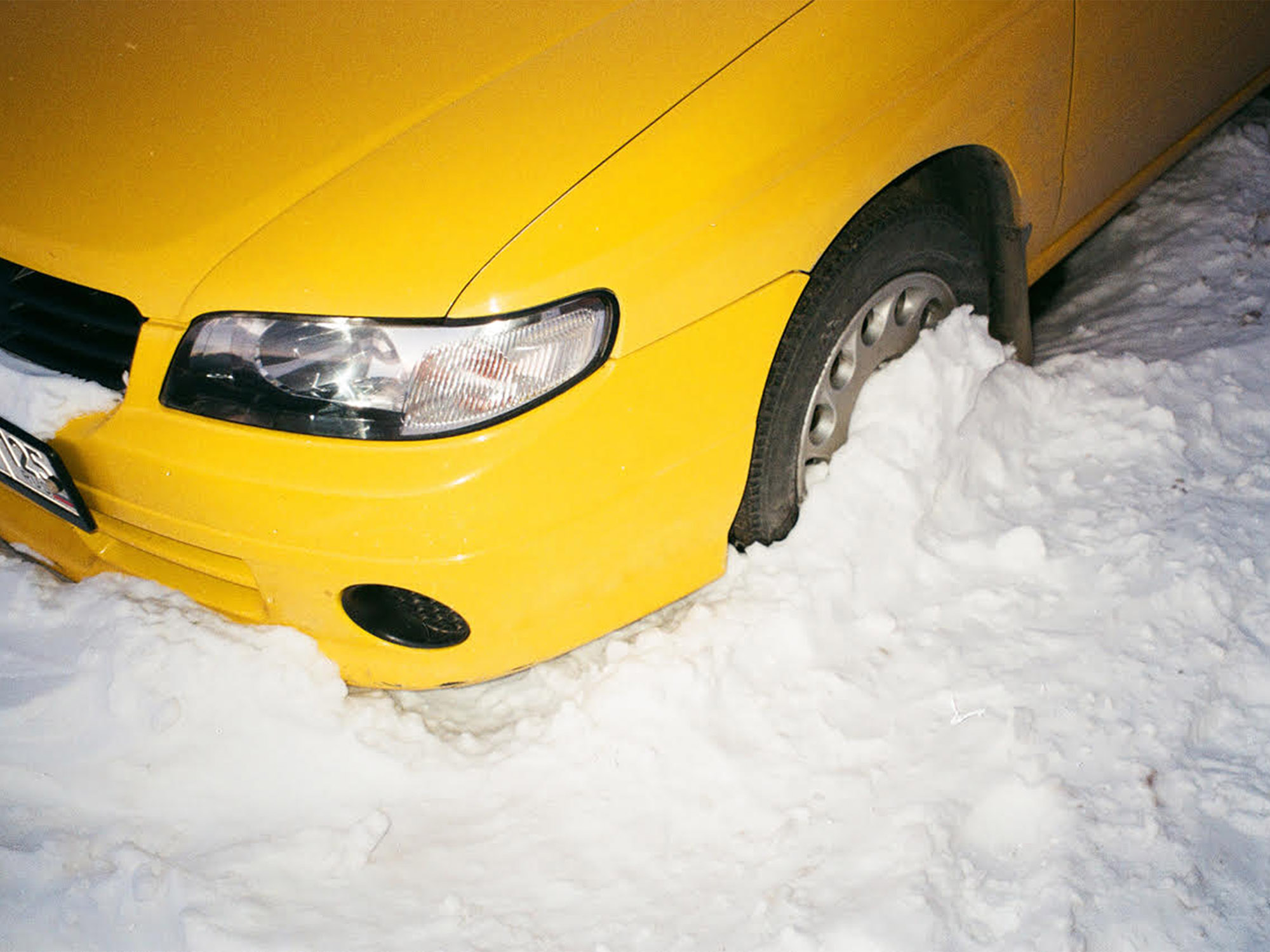
On March 23, the ZARYA Center for Contemporary Art will launch “Sum of its Parts,” an exhibition by the Vladivostok-based photographer Denis Korobov. The show is conceived of as an installation of 60 photographs of varying size and scale, reflecting the everyday life of Vladivostok. The exhibition will remain on view through April 22. Admission is free of charge.
“I started taking my first shots of the city back in 2014,” Denis Korobov recalls. “These compositions were caught by chance in the camera’s viewfinder, but each wielded a mystical aesthetic, whether it was the specific geometry of a building, the rainbow-tinged film of gasoline in a puddle, or a dead pigeon. As time passed, I came to understand that I was not interested so much by photographs of people, as by images of what they leave behind. These collisions of ideas, textures, geometries – this is what I look around for as I cut circles through the city’s residential districts.”
Over the past three years, Korobov has documented the daily life of the city in short but numerous series, including “garage façades,” “the art of advertising,” “car parks,” “under a blue tarp,” “food and the body,” and “playgrounds.” His images provide a fresh and unusual perspective on moments that we might otherwise consider random or invisible to the normal eye, and thus capable of slipping by without notice.
Through the artist’s interpretation, the portrait of the city comes together as a combination of images, the sum of individual parts bound by the light irony of the observer, a compositional ingenuity, a refined sense of color and a poetic use of rhythm, all while producing a documentary record of the light, character and texture of a given place. And while several of the images may suggest partial staging, they still preserve the elusive quality of the moment.
As the curator of the exhibition, Larisa Grinberg, explains, “In the case of Denis Korobov, what we are seeing is his search for the genius loci, exploring the environment around him. His method of research – conducted through scouring minute, almost unidentifiable segments – is entirely logical. On the other hand, close attention to non-obvious details is not exactly a novel technique for any generation of photographers. However, this is precisely where a new round of young photographers picks up: just because ‘everything has already been said,’ it doesn’t mean that someone has already lived our lives, and everything we are experiencing in the here and now, we are experiencing for the first time. It’s like with a declaration of love; every second, thousands of people all over the planet are making them, but that doesn’t mean that one can’t still express one’s sincerity through this act of confession. In the same way, these ‘parts of the city’ that Korobov is documenting are each meaningful in their own way. And the search for the whole, the genius loci, through these barely-legible fragments stands alone as an exploration of what’s happened not ‘before our time,’ but rather ‘never before our time.’”
For the exhibition “Sum of its Parts,” the photographs are presented without frames and directly mounted on the wall in a manner that downplays their individual significance in favor of emphasizing their role within the greater context, allowing the viewer to forge their own associations.
For Reference: Denis Korobov is a photographer born in 1991 in the Primorsky Krai settlement of Terney. He currently lives and works in Vladivostok. Among his solo exhibitions are “No Parking No Parking,” at the ZARYA Art Residency in 2017, as well as an exhibition at Ogurtsy (“Cucumbers”) space in Vladivostok in 2015. He has participated in the apartment exhibitions of the Vladivostok School of Contemporary Art (VSCA) and the auction preview exhibitions at ZARYA CCA in 2016 and 2017. Korobov was included in VSCA’s 2016 project “New Poverty,” created in collaboration with Moscow’s Krasnyi Center and the St. Petersburg-based collective Chto Delat.
Larisa Grinberg is a gallerist, curator, and chief specialist in regional development for ROSIZO/NCCA, as well as the chair of the Masters program in “Art-Management and Gallery Business” in the department of “The History of Film and Contemporary Art” at the Russian State University for the Humanities. Since 2007, she has been the co-founder and art-director of the photography gallery Grinberg (formerly known as “Photographer.ru”) and she also co-founded the Moscow-based photography agency, Photographer.ru (2004-2014). From 2014-2017, she was the curator of three municipal exhibition halls: Na Shabolovke, Peresvetov Pereulok and Gallery Nagornaya.
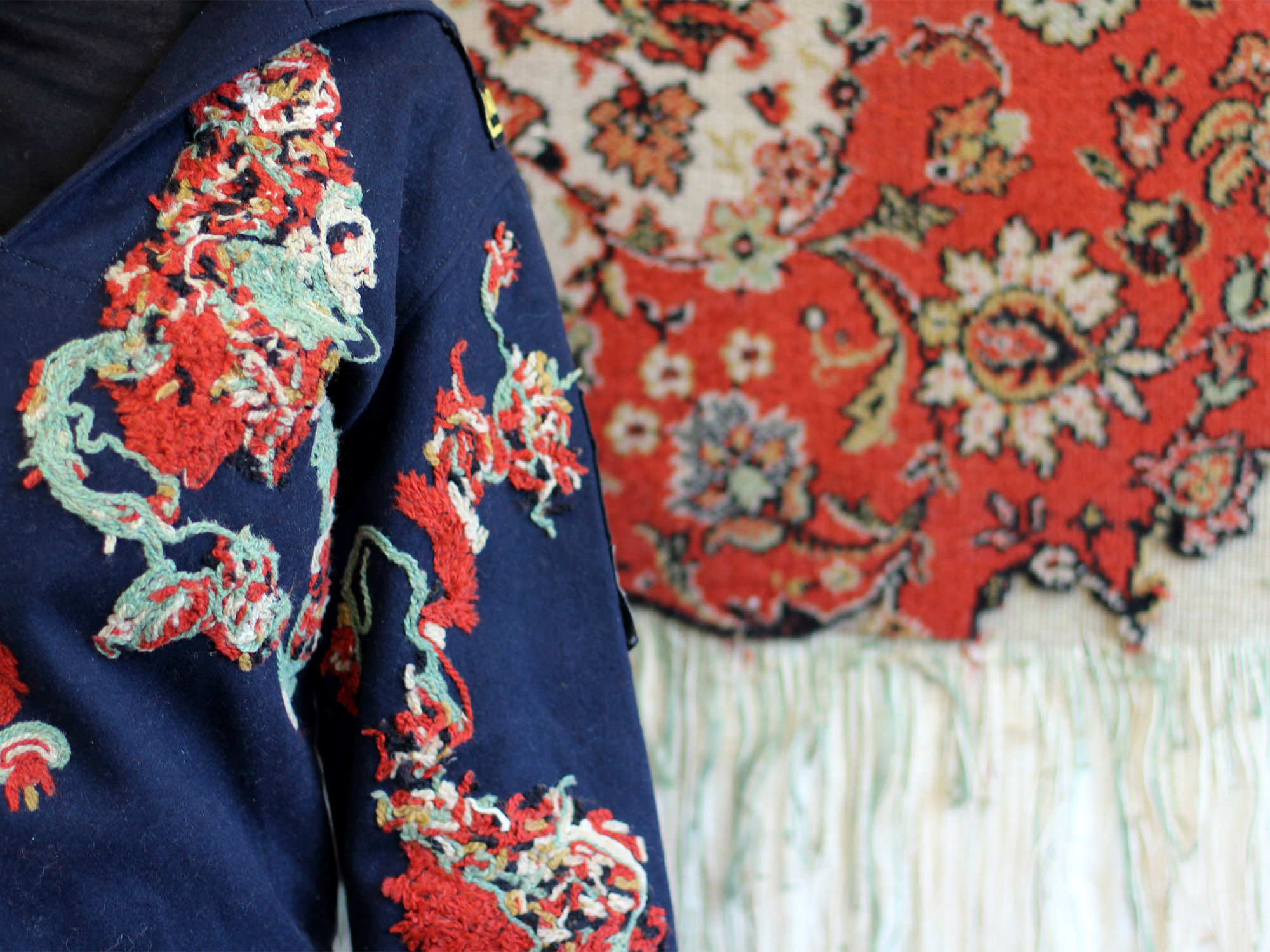
MARCH 10-25
Whether as clothing or elements of the interior décor, textile has always enjoyed a particular closeness to the human body, sharing overlapping lifespans with its users as a material witness to an individual’s life. Perhaps it is for this aspect that nearly everyone can think of at least one such item, which may have long since lost its practical function, but remains difficult to toss out, if only for all the emotions and memories associated with it.
Elena Redaelli’s practice picks up on these associative properties of textiles and the various processes of working with fabrics. An artist-nomad, Redaelli spent most of her life in her homeland of Italy, then moved to the north of Europe, where she lived for five years in Norway, before departing for Asia, where she has been traveling recently, participating in festivals and artist residencies in China, Taiwan, Australia. Her most meaningful projects engage with the local audience, fostering the kinds of dialogues and interactions only possible within a collective. In this spirit of collaboration, Redaelli shares authorship of her works with everyone who contributes to the process of their creation.
Redaelli’s site-specific sculpture and installations are created through sustained engagement with both the place (environmental art) and the community (workshops & programming). As the ZARYA artist residency is based on the grounds of a former garment factory, the artist decided to use the opportunity to reflect on used fabrics found in Vladivostok. While artifacts from the building’s past no longer exist, the factory still maintains an archive of documentation and photographs. In this sense, the artist’s project offers a symbolic return to the memory of the site.
“Unravelled Backgrounds” centers on the processed and modified surface of the carpet, divided into several sections. The lower third of the carpet consists of unwoven threads, revealing the structure of the weaving and thus hinting at the traces of the intricate labor invested into the production of each interior object – even those produced on a mass scale. The artist left the central section untouched in order to emphasize the original Middle Eastern-inflected pattern around the edges. The upper section is comprised of a mosaic of the patches produced by participants in Redaelli’s textile processing workshops, conducted weekly at the artist residency this past month. Each of the elements produced is accompanied by personal stories or comments from the participants. The display also includes the found uniform of a student of the Maritime Academy, embellished with threads of the carpet using a felting technique.
The artist found her inspiration for this project in photographs of the interiors of Soviet homes. Carpets, which were churned out in mass quantities by the factories of the Southern Republics of the USSR, covered not only to the floors of Khrushchyovka apartments typical of the Post-War period, but also the walls, where they were strung up like tapestries. Beside the utilitarian functions of insulation and soundproofing, these carpets wielded a symbolic value, as objects indicative of the household’s financial status. Even though today these carpets are considered horrifically outdated and kitschy, for the majority of people living in Russia, these elements of the interior are still identified as the quintessential backdrops of one’s day-to-day routines.
Redaelli turns to textiles and fabrics first and foremost for the rich emotional associations inherent to used, worn or outdated materials. Within her projects, personal narratives – both those shared by her collaborators and those that will never be told – become the threads, comprising the canvas of human history.
The ZARYA artist residency would like to extend its gratitude to the Vladivostok-based “Fashion Foolish,” an initiative that collects used clothing and textile materials for the further distribution and use in art and design projects, for its invaluable help in gathering materials.
For Reference: Elena Redaelli was born in Italy in 1981. She currently lives and works in Norway. In 2005, she graduated from the Academy of Fine Arts in Rome, Italy, where she majored in sculpture. Among recent personal exhibitions are WEAVING A BETTER FUTURE, WAB and Red Gate Gallery, Beijing, PRC (2017); VESTIGE, Upper Ray Gallery, Treasure Hill, Taipei, Taiwan (2017); and FADEN WERK, Kunstverein in Bad Godesberg, Bonn, Germany (2016). She has participated in group exhibitions including the Guandu International Nature Art festival, Taipei, Taiwan (2016); the International Forest Art path, Darmstadt, Germany (2016); RES-ART TRAME D'AUTORE, Imbiancheria del Vajro, Turin, Italy (2016); and the Biennale Giovani Monza, Villa Reale Monza, Italy (2013).
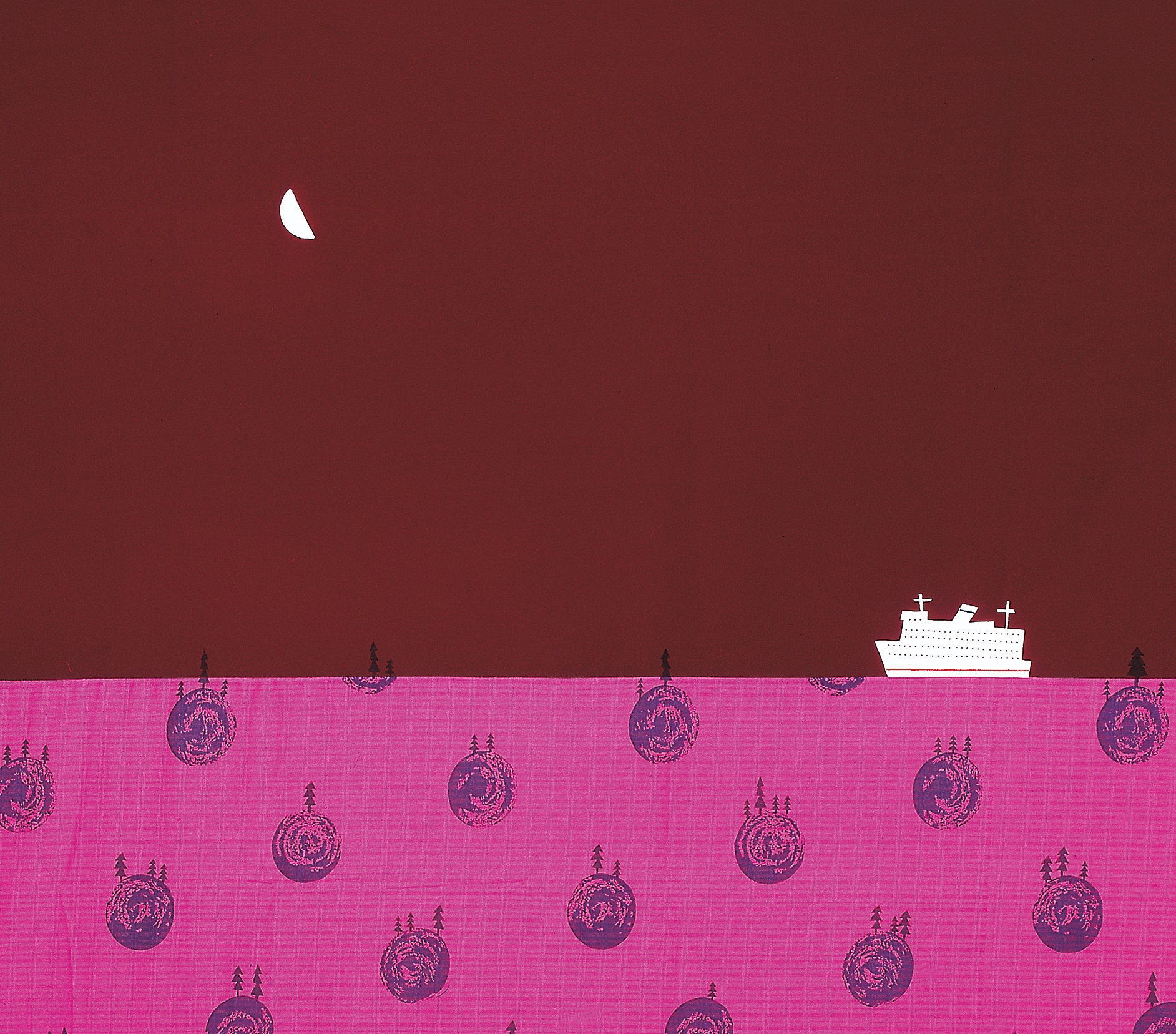
FEBRUARY 23 - MAY 13 / MAIN EXHIBITION HALL
On February 23, the ZARYA Center for Contemporary Art will launch “Timur Novikov and the New Artists.” Produced in collaboration with the Moscow Museum of Modern Art, this retrospective exhibition surveys the artistic output of this remarkable group, which was founded in Leningrad in 1982. The exhibition will remain on view through May 13. Admission is free of charge.
“This exhibition guides the visitor through a detailed and thorough retelling of one of the most vibrant and pivotal periods in Russian contemporary art,” explains ZARYA CCA’s Chief Curator, Alisa Bagdonaite. “Timur Novikov and the New Artists managed to build up around them a creative position that was in maximal contrast to the social, political and artistic context of the time. For us, it is a true honor to be able to show these legendary works of the art in the Far East for the very first time.”
The survey at ZARYA CCA will include extraordinary works by Timur Novikov, Oleg Kotelnikov, Inal Savchenko, Vadim Ovchinnikov, Sergey Chernov and Sergey Bugaev, as well as many other members of the Leningrad avant-garde of the 1980s and 90s. Among the works presented will be textile collages from Novikov’s “Horizon” series; paintings; archival materials (photographs, texts, and video footage from Pirate Television); poetry and prose written by the artists; various art objects; and costumes. These items will be divided into several thematic sections, kicked off by a selection of personal works by Novikov. Other galleries will be dedicated to Necrorealism; Pop-Mekhanika; the New Artists; the New Wilds; and the New Composers. This exhibition at ZARYA CCA is able to so comprehensively cover the wide-ranging activities of this group only with the support and collaboration of the Moscow Museum of Modern Art, the ART4.ru Museum, the Petersburg Video Archive and the private collections of Sergey Shutov and the family of Timur Novikov. The exhibition was curated by Ekaterina Andreeva.
The New Artists is a creative alliance founded by artist and curator Timur Novikov and his close friends Ivan Sotnikov, Oleg Kotelnikov, Kirill Khazanovich and Georgy Guryanov. The New Artists formalized in response to the Zero Object (1982), a famous intervention made by Novikov and Sotnikov, which was followed in 1983 by two other happenings: the first public performance of the utyugon and the poetry-filled “Medical Concert.” By the end of the 1980s, this tight circle had transformed into a movement of more than 70 participants, many of whom also belonged to a number of other associations – among them, the Club of Friends of Mayakovsky, the Engineers of Art, the Necrorealists, etc.
The creative outpouring of the New Artists aimed at nothing less than a total transformation of life around them. This entailed producing not only paintings, graphics, panels, and collages, but also literary works, animations and parody films, the invention of new musical instruments (such as the utyugon and the “long string”), and theatrical performances (In 1984, Novikov established New Theater, whose first production was an interpretation of Daniil Kharms’ The Ballet of the Inseparable Trio, which, in its second run, cast as one of the “Inseparables” Garik Assa, who was prominently featured in ZARYA’s previous exhibition “Assa En Masse”).
The performances of New Theater were scored by the avant-garde sonic collages of New Composers Igor Verichev and Valery Alakhov, while Novikov and the New Artists participated in concerts by the bands Kino and Pop-Mekhanika, and, in 1985, the Leningrad rock club hosted “Happy New Year!,” the first public exhibition of the New Artists. The genius of wild painting, Oleg Kotelnikov joined forces with Evgeny Yufit, Evgeny “Debil” (“Imbecile”) Kondratiev and Andrey “Mertvyi” (“Dead”) Kurmoyartsev to devise a cinematographic and literary Necrorealism. The artist, musician and writer Vadim Ovchinnikov and Vladislav Gutsevich organized the literary club Druzhba (“Friendship”), while Sergey Bugaev-Afrika launched the Club of Friends of Mayakovsky and the Novorossiysk School, whose members included former classmates from Novorossiysk, Inal Savchenko, the rising star of expressionist painting, and Andrey Krisanov, an artist and guitarist in the band Kino. A series of avant-garde fashion shows by the New Artists were captured by the camera of E-E (Evgeny Kozlov), who also shot the album covers for records by Kino and Pop-Mekhanika, as well as portraits of Novikov, Guryanov and the New Composers. The Perestroika years would see the rise of the New Wilds (Kozin, Maslov and Zaika), as well as the dawn of unabashed superstar Vladislav Mamyshev-Monroe, who hosted Pirate Television alongside Yury Lesnik. The esteemed Soviet painter Maria Sinyakova-Urechina bestowed upon Novikov and Bugaev the title of “Presidents of the Terrestrial Sphere,” a designation coined by the great Russian Futurist, Velimir Khlebnikov.
In this historic retrospective, the artistic production of the New Artists is framed as part of the international “New Wave” of “free expressionism,” a movement that includes Jean-Michel Basquiat, putting the ASSA Gallery on par with Andy Warhol’s Factory.
For Reference: Timur Novikov (1958-2002) became an artist and curator during the rise of the wave of Nonconformism in Leningrad. In 1977, he started participating as a member of Letopis (“Chronicle”), a group founded by Nonconformist-Expressionist Boris Koshelokhov. The following year, Koshelokhov received permanent residence in Italy, and twenty-year-old Novikov stepped in to take over the organization of the group’s activities. He founded a squat with studios for his fellow Letopis members in the former Church of Shestyakov, which he christened in honor of the Apostles to Ancient Rus, Saints Kirill and Methodius. While police promptly put an end to this squat, Novikov was not discouraged and continued to organize unofficial exhibitions on beaches and parks. In 1980, in a renovated communal apartment on Ulitsa Voinov, Novikov inaugurated the ASSA Gallery with the “First Biennale of Portraits of Timur Novikov.”
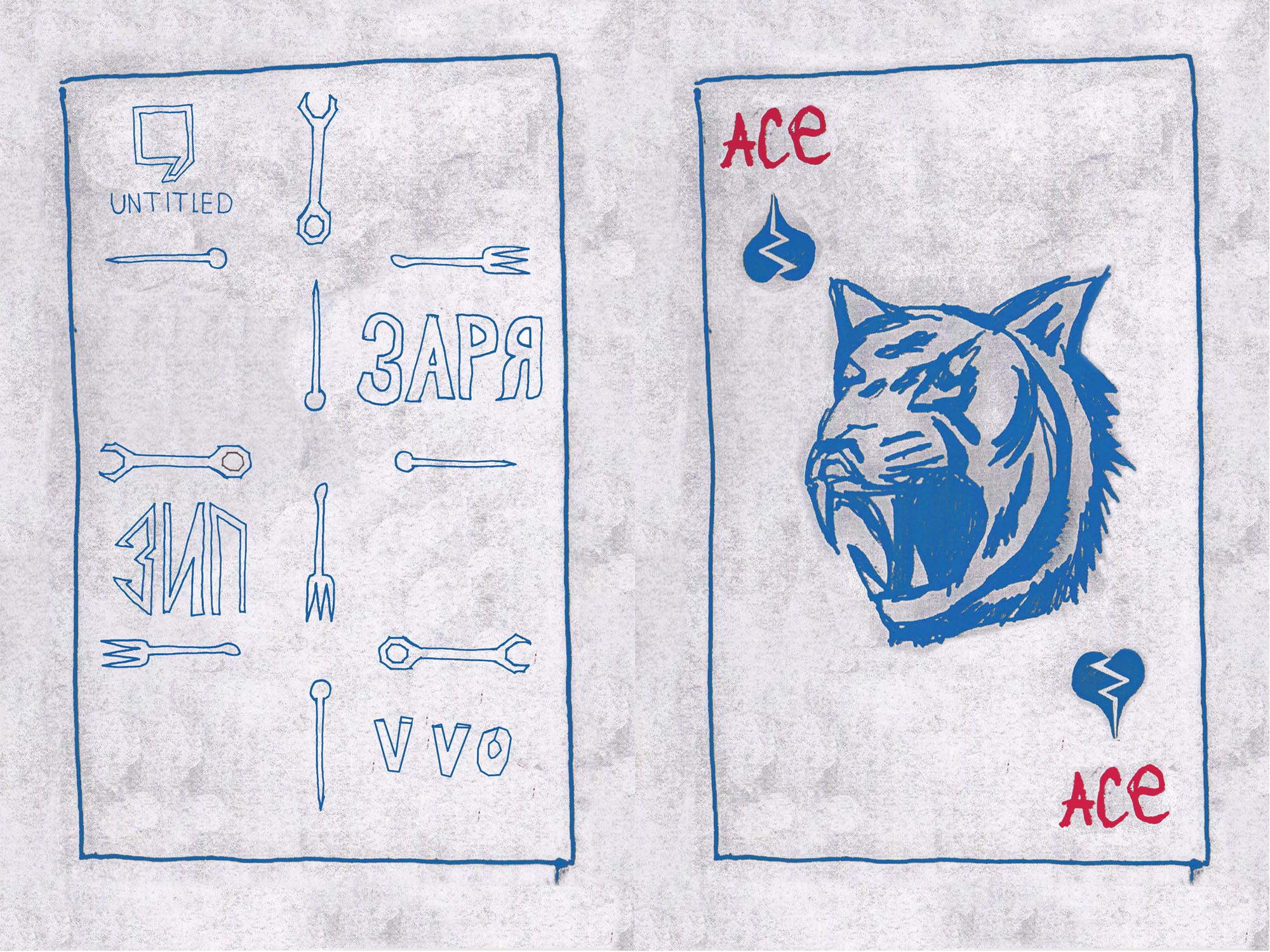
JANUARY 27 – MARCH 11
Crystal Tiger
Nabbing the name of the sole casino in the Primorsky Krai, the ZIP Group creates a total installation, where everything is not what it seems. The installation is based on a symbolic system, a cipher whose key is Vladivostok itself – a city that swirls together aspects of Europe and Asia, of a Chinese resort town or a Russian San-Francisco, an enormous international port, a mysterious territory once closed to the outside world, the grand park of an imperial dynasty and the furthest outpost of colonization.
The space of the exhibition remains, on the one hand, a transitional space (through which one enters into the large exhibition hall), while on the other, it constitutes its own isolated autonomous zone, stocked with everything necessary: from the cramped living quarters of a hikikomori (young Japanese hermits) to an underground Chinese casino. The rules here are set by the Crystal Tiger, a symbol of fortune and strength, the trump card in any hand.
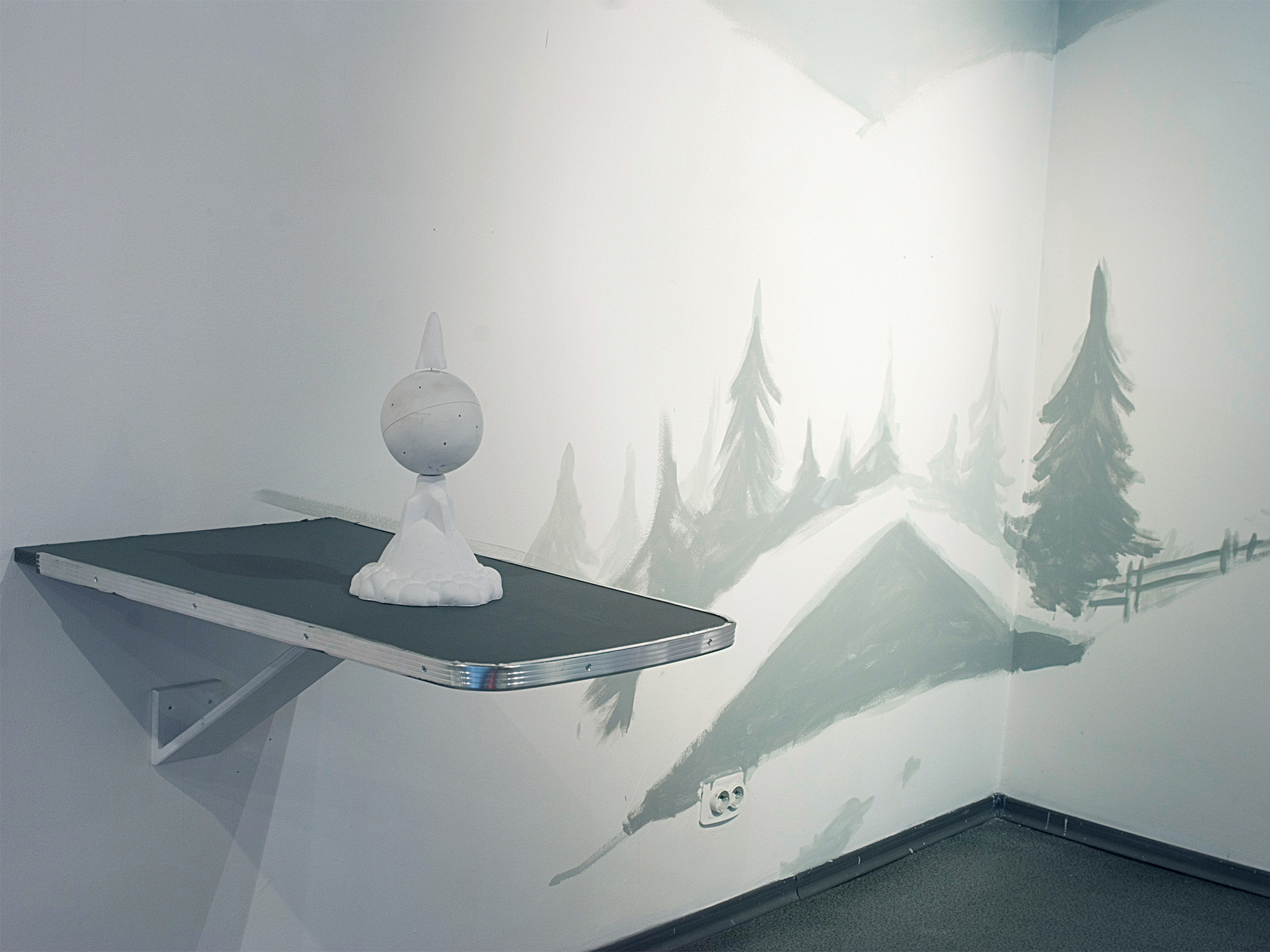
16 DECEMBER 2017 — 14 JANUARY 2018
I dip my hand into my pocket for money and feel something’s not right… the barmaid (I’d seen her somewhere before) shoots me a look… And suddenly I realize that I don’t have any money, or, for that matter, even a pocket. In fact, I’m not wearing any clothes at all – nothing but a ski… My hand just slides along my naked body!
«Cold Land. Northern Tales», is the name of the exhibition by Tania Antoshina, on display from December 12 through February 15, 2015 in Vladivstok’s Zarya Contemporary Art Center. Striking in its format, the exhibition consists of an installation of an entire collection of small objects and sculptures, tokens of the artist’s memories and dreams of Siberia, where she spent her childhood and adolescence.
Each sculpture or object is presented on the kind of tray tables found on long-distance trains, which are attached at intervals along the walls. These dreams of the North are set against a backdrop of endless, snow-covered fields, drifting by the train windows via wall paintings. This gives the viewer the sense that what they are experiencing is the same train compartment, captured at various stages of a journey: as the train pushes on, it brings with it new objects and fresh dreams.